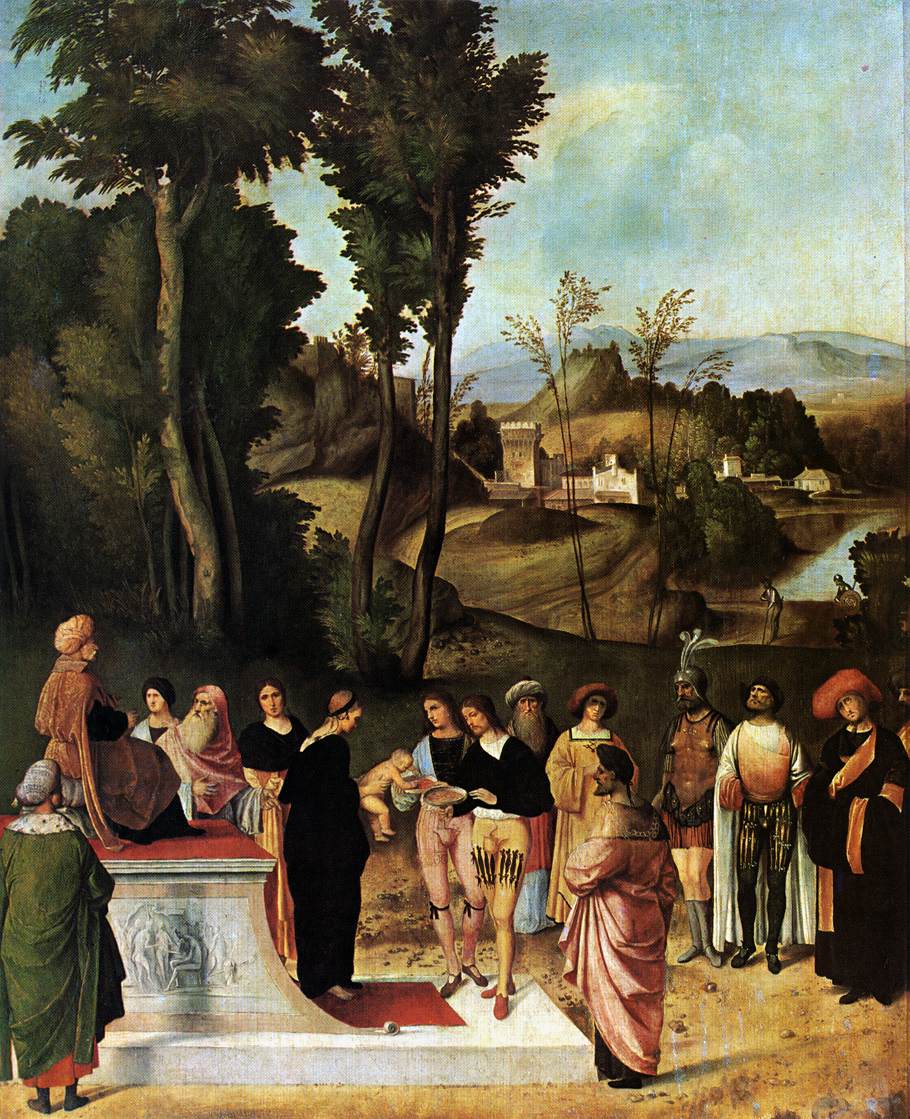
Circle of Giorgione
The Trial of Moses
1501
Oil on panel
Uffizi Gallery, Florence
This painting was originally affixed to an interior door in a Venetian palazzo.1 It is not known who owned the palazzo, but it was probably not one of the few Jewish refugees who resided in the city at the time. The painting illustrates a story originally from a Jewish midrash on Exodus that says that when presented to the Pharaoh the infant Moses took the man's crown from his head and trampled it. A priest advised that the boy be killed, but an angel appeared and persuaded the Pharaoh to put the boy to a test instead. He was shown two dishes, one with onyx stones and one with burning coals. Naturally the child reached for the pretty stones, but the angel guided his hand toward the coals. He picked one up and held it in his hand without being harmed, a miracle that persuaded Pharaoh to relent.2
In his retelling of this story, Josephus leaves out the test and says instead that "God himself, whose providence protected Moses, inclin[ed] the king to spare him."3 This simplified version was reduced even further by Rabanus Maurus, who cited Josephus but ignored the remark about God's protecting Moses and said instead that "Pharaoh's daughter freed him."4
In the painting, the artist generally follows the midrash account rather than the simplified versions. Pharaoh sits on his throne and his daughter holds the child, who reaches for the coal. But the angel is absent and instead of onyx stones the other dish has gold coins. Nor is the crown in evidence. These changes are presumably due to an intermediate Christian source known to the artist or his client.
As is common in Venetian painting in the 16th century, the Egyptians are pictured in turbans. Pharaoh's daughter wears a black robe and simple sandals, whereas the others are sumptuously dressed and wear colorful shoes. Her renunciation of the prevailing fashions may reflect the commentators' assertion that she is a type of "the Church of the Gentiles" and that her washing in the Nile represents the cleansing effected by baptism.5
Read more about images of Moses being adopted.
Source: this page at the Web Gallery of Art.